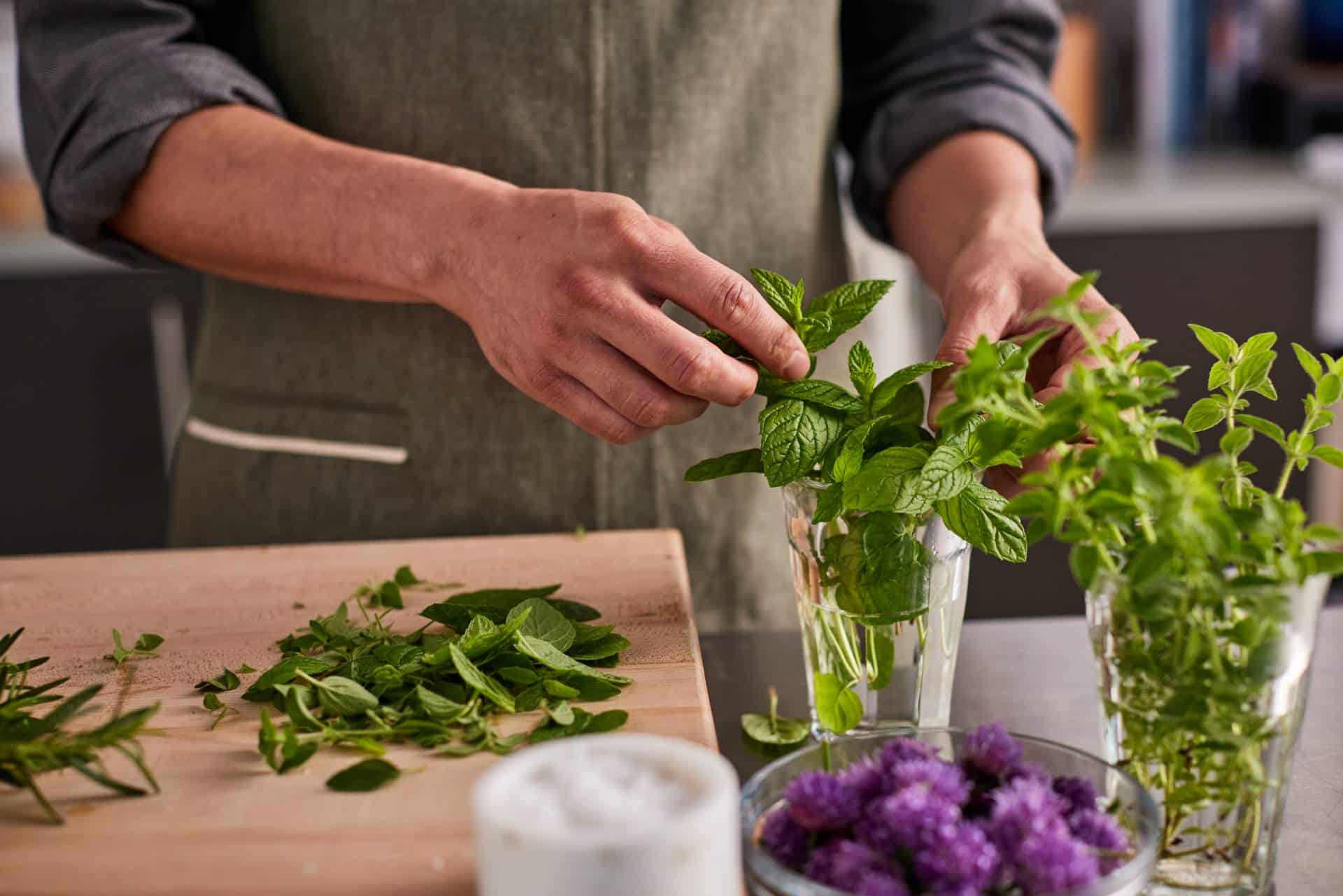Become the Hostess With The Mostest


From the subtle sweetness of basil to the earthy tones of sage, the right herb can elevate a dish from good to gourmet. Yet, when it comes time to choose between fresh and dried herbs, many of us—whether we’re seasoned home cooks or enthusiastic beginners—find ourselves pausing. Dried herbs are a convenient and usually cheaper option, but can they truly stand in for fresh ones?
Whether you’re crafting a hearty stew that simmers for hours or a fresh salad that bursts with the brightness of just-picked herbs, knowing how to work with fresh and dried herbs will make all the difference in your recipes.
In this comprehensive guide, learn when to use fresh versus dried herbs, how to substitute one for the other and the best storage practices to enhance your cooking and ensure that you capture the desired flavors and aromas in your dishes. Let’s dive in!
Hungry for more? From herb shears to salad spinners, our collection of herb tools has everything you need to ensure every recipe is packed with flavor.
Celebrated for their bright and lively flavors, fresh herbs play a crucial role in recipes that require a splash of vibrancy. They’re indispensable in cuisines that value bold and fresh tastes, such as those found in Mediterranean, Southeast Asian and Latin American countries.
Incorporating fresh herbs into your cooking is as much about timing as it is about flavor. Adding them too early in the cooking process can lead to muted flavors and lost nutritional value, while introducing them too late may not allow their full essence to meld into the dish.
Here’s a few key ways to use fresh herbs:
Dried herbs, while less potent in freshness, offer a concentrated flavor that can withstand long cooking times, making them ideal for simmered dishes, sauces and stews. Their shelf life is significantly longer than fresh herbs, making them a pantry staple for adding depth and complexity to a dish without a last-minute trip to the grocery store.
When to use dry herbs:
A common question in cooking is how to substitute dried herbs for fresh when the latter is unavailable.
A general rule of thumb is the 3:1 ratio: for every 3 parts (such as teaspoons, tablespoons or cups) of fresh herbs required in a recipe, you can substitute 1 part of dried herbs.
For example, if a recipe calls for 1 tablespoon of fresh basil, you could substitute it for 1 teaspoon of the dried herb. This ratio accounts for the concentration of flavor in dried herbs compared to their fresh counterparts. However, this conversion can vary based on the herb’s potency, so it’s always best to start with a smaller amount and adjust to taste.
Leafy, delicate herbs (like basil, cilantro, dill and parsley) tend to lose a significant amount of their vibrant flavor when dried. While the 3:1 ratio is a good starting point, it’s good to taste and adjust as some dishes may require a bit more of the dried herb to match the freshness of the original recipe.
Woody, robust herbs (like rosemary, thyme, oregano and sage) retain their flavor well when dried, making the 3:1 conversion ratio quite accurate. In some cases, however, especially with potent herbs like rosemary, you may even need to use a little less than the ratio suggests to avoid overpowering your dish.
When incorporating dried herbs into your recipes, introducing them early on or during the cooking process is ideal. This gives them sufficient time to rehydrate and integrate their flavors into the dish. In contrast, fresh herbs, especially those that are more delicate, are typically added towards the end of cooking to preserve their vibrant color and fresh taste.
It’s crucial to note that the potency of dried herbs can vary significantly based on the brand and their age. Although beginning with the suggested conversion ratio is a solid strategy, always taste your dish as it cooks and adjust the seasoning as needed. The flavors of dried herbs will continue to develop and intensify over time.
However, there are instances when fresh herbs are used primarily for their garnish, contributing both to the dish’s visual appeal and texture. In such cases, finding a suitable dried substitute might be challenging. When fresh herbs play such a critical role, sticking with them, if possible, is often the best route to ensure the intended presentation and flavor nuances of your recipe.
To maximize the flavor of dried herbs, you can lightly crush them between your fingers before adding them to your dish. This action helps release their essential oils, enhancing their aroma and taste.
Understanding these conversion principles allows you to adapt recipes to what you have on hand without sacrificing flavor. Whether you’re working with fresh or dried herbs, adjusting quantities and cooking methods accordingly will help you achieve delicious results in your culinary creations.
For fresh herbs, store them in the refrigerator, wrapped loosely in a damp paper towel and placed in a plastic bag. For herbs like basil, consider placing stems in a glass of water, like a bouquet, and covering the leaves with a plastic bag, storing at room temperature away from direct sunlight.
A long-term option is to chop the herbs and mix them with water or olive oil, then freeze in ice cube trays for easy addition to cooked dishes.
Dry herbs, on the other hand, need to be stored in a cool, dark place in airtight containers. Avoid storing near heat sources or in direct sunlight, as this can cause them to lose their flavor faster. Dried herbs typically last for about 1 to 3 years, but they are best used within the first year for optimal flavor.
Hungry for more? From herb shears to salad spinners, our collection of herb tools has everything you need to ensure every recipe is packed with flavor.
Join The Conversation